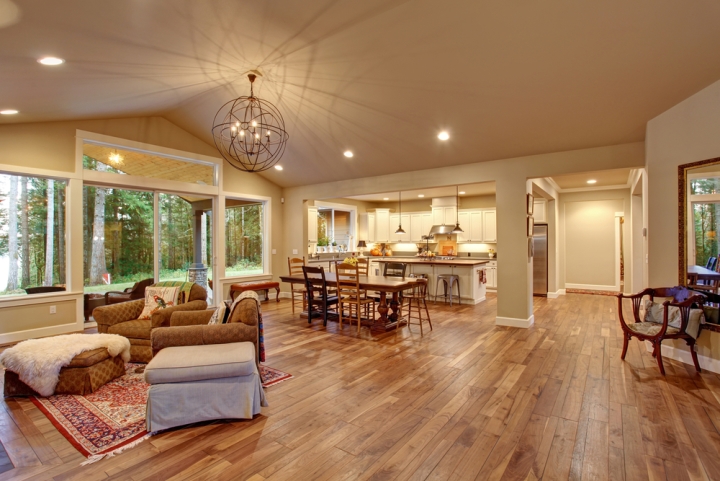
When it comes to creating a cohesive and visually appealing space, flooring plays a crucial role.
Transitioning between two different wood floors can be a challenge, but with the right techniques and tools, you can achieve a seamless and stunning result.
In this blog post, we will guide you through the process of transitioning wood flooring between rooms with contrasting wood floors, ensuring smooth transitions that enhance the overall aesthetics of your home.
Plan Ahead and Choose the Right Transition Strip
Before diving into the installation process, it's essential to plan your transition carefully. Consider the layout and design of the rooms involved at the transition of two different wood floors meeting together.
Evaluate the types of wood flooring you want to transition and select a transition strip that complements the style and color of both floors. Wood transition strips are available in various materials, such as wood, metal, or laminate, and they come in different profiles to accommodate specific flooring types.
Ensure Proper Expansion and Contraction
Wood is a natural material that expands and contracts with changes in humidity and temperature.
To prevent warping or buckling, leave a buffer zone of at least half an inch between the two different wood floors meeting. This gap will allow the flooring to expand and contract without causing any damage. Fill the gap with a flexible sealant that matches the color of your hardwood floors for a seamless finish.
Create a Visual Transition with Accent Tiles
If you want to add a touch of creativity and flair to your floor transitions, consider incorporating accent tiles. Choose tiles that complement the color scheme of both rooms, acting as a transition between the contrasting wood floors.
You can create a straight line of accent tiles in the buffer zone, visually dividing the two flooring types and adding an interesting focal point. Matching dark woods to light woods, or wood to tile transitions, are one way your floor creates interesting and eye-catching design.
Match the Color and Style
While contrasting wood floors between rooms can create a visually striking effect, it's important to maintain some visual cohesion. To achieve this, try to match the color tones or undertones of the two wood floors.
If the colors are significantly different, consider adding a piece of wood stained or painted with a hue that bridges the gap between the two floors. This can create a more harmonious transition while still preserving the uniqueness of each room.
Utilize Transition Pieces for Smooth Transitions
Transition pieces, such as T-molding or reducers, are essential for achieving smooth and safe floor transitions. These transition pieces not only provide a seamless connection between the different wood floors but also help to cover the gap and protect the edges from potential damage.
Make sure to measure and cut the transition pieces accurately to fit the width of the transition area, ensuring a secure and flush installation.
Consider the Open Floor Concept
If you have an open floor plan, transitioning between two different wood floors becomes even more crucial. Consistency and flow are key elements in open spaces.
Aim for a unified look by using the same type of wood flooring throughout most of the area and reserving the contrasting wood for specific zones or rooms. This way, the transition becomes a deliberate design choice rather than a jarring disconnect.
Takeaways
Transitioning between two different wood floors can be a design challenge, but with careful planning and the right techniques, you can create a visually stunning and seamless transition.
By choosing the right transition strip, allowing for expansion and contraction, incorporating accent tiles, matching colors and styles, and using transition pieces, you can achieve a cohesive and harmonious flow between rooms with contrasting wood floors. Whether you have an open floor plan or separate rooms, these tips will help you create a space that feels connected and aesthetically pleasing.
